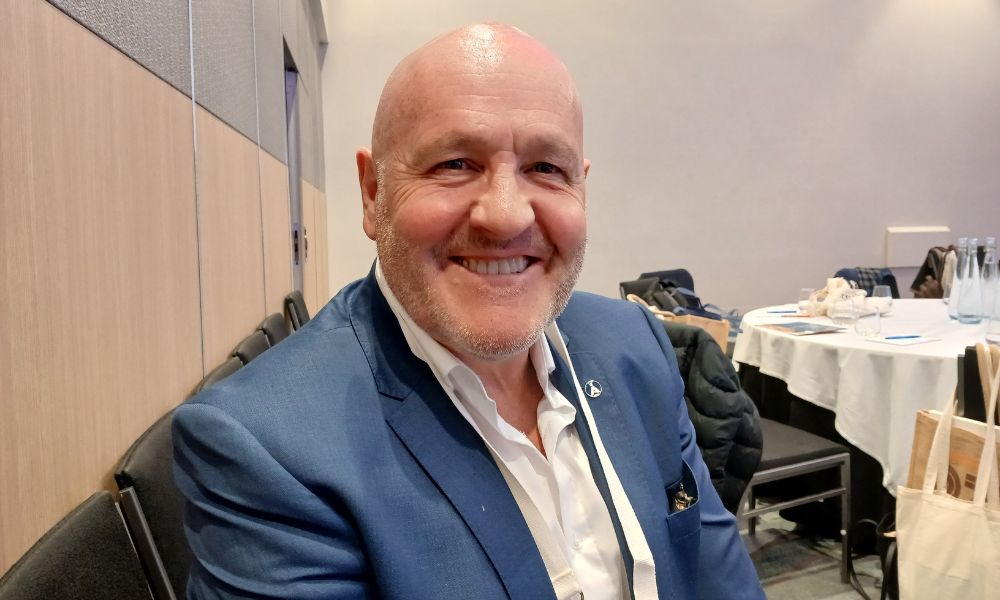What should global insurers learn from New Zealand?

What should global insurers learn from New Zealand? | Insurance Business Canada
Catastrophe & Flood
What should global insurers learn from New Zealand?
“We’re not stuck in our ways,” says insurance head
Catastrophe & Flood
By
Daniel Wood
The New Zealand insurance market is on the front line of extreme natural catastrophe risks. Has this experience pushed the country’s insurance professionals ahead of the curve? What can global insurance firms learn from the way brokers and underwriters in this market handle nat cats like earthquakes?
At the recent New Zealand Underwriting Agencies Council (NZUAC) Expo in Auckland, Insurance Business asked the leaders of local firms for their views.
Maintaining reinsurance support
“I think in that broader context, New Zealand can be seen to be ahead of the world in some areas,” said Travis Atkinson (pictured above).
Atkinson is general manager of operations for Insurance Advisernet New Zealand. He said despite this big concentration of volatile risks in a small country, New Zealand “fundamentally” has full insurance.
“So we’ve done some things right to manage and maintain reinsurance support for NZ,” he said. “Globally, very few countries have, effectively, full perils cover.”
However, he attributed this resilience partly to luck.
Since the Christchurch earthquakes more than a decade ago, he said, apart from last year’s Auckland foods, the country’s nat cats have been relatively quiet. Meanwhile, rates have climbed steadily.
“We’ve got full insurance, so it’s a big premium pool,” said Atkinson. “The Natural Hazards Commission is a big buyer of cat cover so there’s a lot of premium to be earned out of NZ.”
Another factor in New Zealand’s favour is the stable economy. However, if another round of serious earthquakes happened, he said “global reinsurers might go elsewhere.”
“Cycles have always come and gone,” he said.
Atkinson said, right now, New Zealand is an attractive market for London and other capital providers.
Open minded approaches
“One thing I think we do well in New Zealand is that we’re not stuck in our ways,” said Ryan Clark (pictured immediately below), executive director of Commercial for 360 Underwriting Solutions Group.
Clark said local insurance firms tend to be open to collecting multiple ideas before coming up with an insurance offering.
“Whether it’s from the US storms, or European disasters – analysing multiple data points and then making our own decisions, our own way forward and our own solutions,” he said.
Clark said this applies, not just to nat cats, but “across the board.”

For example, in the wake of Cyclone Gabriel, New Zealand’s susceptibility to storms and flooding was exposed.
“We wanted to upgrade our flood mapping tools,” said Clark. “I reached out globally and talked to a number of different companies.”
He said the solution they chose came from a company in Australia but the process of scoping out offerings from around the world allowed them “to figure out what we needed and adapt it locally.”
“It’s a case study in natural catastrophe risk”
Luke Scott (pictured immediately below) is regional development manager for Market Lane Insurance Group New Zealand. The firm trades locally as The Barn Underwriting Agency.
“It’s a case study in, as you say, natural catastrophe risk,” said Scott.
He said the market’s good returns tend to attract significant capital.

“I think the risks are well understood and Lloyd’s syndicates can certainly make their own informed decisions on what that looks like for New Zealand,” said Scott.
He said local underwriters sometimes handle nat cat risks a little differently to rest of the world, including in the way some deductibles and sub limits are applied.
“For example, we apply a site value deductible for earthquake, which is, generally speaking, a flat number around the world,” said Scott.
He said the site value deductible includes understanding risks like the age of the building, the construction materials and the soil condition.
“So you cater your earthquake deductible by the actual risk profile itself,” said Scott. “That’s something we’ve learned out of events that have happened over the years.”
However, he said some aspects of nat cat cover are a challenge.
“Probably something we don’t do too well in New Zealand actually, is we give full cover for all perils which is different from, say, Japan, where there’s sub-limited earthquake cover,” said Scott.
What do you think global insurers can learn from the way New Zealand insurance professionals handle nat cat risks? Please tell us below
Related Stories
Keep up with the latest news and events
Join our mailing list, it’s free!






